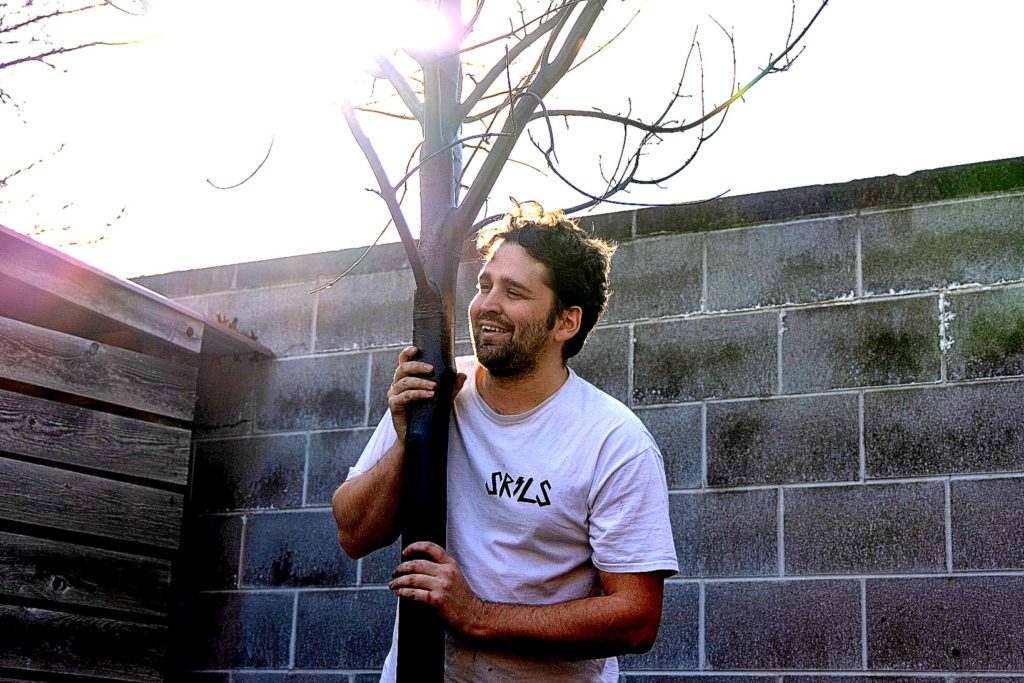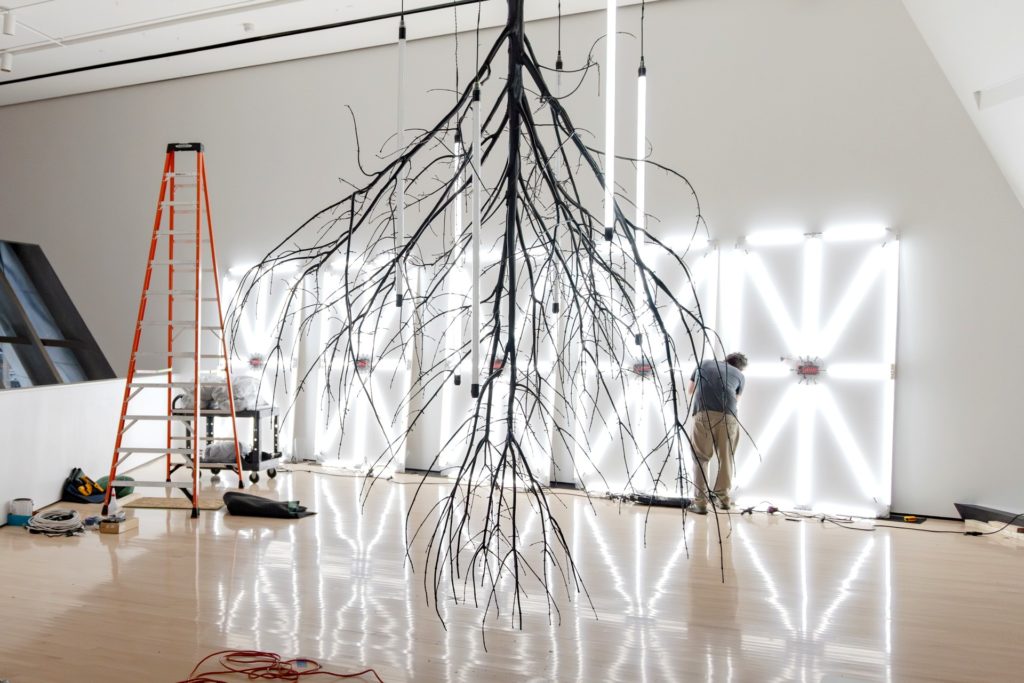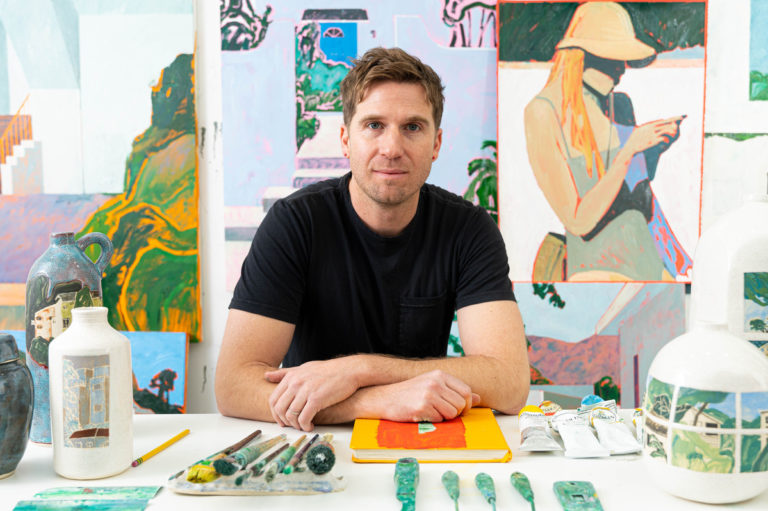Patrick Taylor, a Spring 2024 Michigan State University graduate with an MFA from the Department of Art, Art History, and Design, is a boundary-pushing artist whose artistry is rooted in his creative writing background, his practice of making music and digital art, and his commitment to building collaboration and community. His thesis work is part of the 2024 Master of Fine Arts Exhibition that runs through Sunday, May 26, at the MSU Broad Art Museum.

Taylor’s work reflects a fusion of technological innovation and artistic expression, embodying the intermedia art culture theorized by Dick Higgins in the 1960s, a dissolution of the genre that makes art more accessible and more unrestricted in its expression.
Delving into the intersection of technology and spirituality, Taylor’s work explores the transformative power of information technology and its implications for human existence. He navigates existential questions surrounding consciousness, selfhood, and the transition from the physical to the digital realm.
Through his work, Taylor invites viewers to contemplate the intricate connections between technology, nature, and spirituality, striking a balance between showing and telling and sparking curiosity and speculation about the underlying processes at play. He meticulously designs each piece to evoke a coherent narrative, inviting viewers to engage with the interconnected themes woven throughout his work.

In his thesis piece, Taylor imagines a spiritual practice that places particular attention on humanity’s transition from the physical to the digital.
“LEDs, microcontrollers, and relay systems serve as the digital counterpart to the organic matter of a suspended tree, and granular charcoal litters the space as a symbol of the destruction necessary to move from one form to the other,” he explained. “In the video piece, Mimir’s Well, I was particularly inspired by the myth of the Norse god Odin’s self-sacrifice where he plucked out his right eye, threw himself on a spear, and hung himself from the world tree for nine days in exchange for the ability to read ancient runes and to see everything all at once. I felt that humanity might be doing something similar with technology, a ritual sacrifice of the natural world in exchange for access to an infinite ocean of information. Mimir’s Well is intended to embody that idea, and I hope it’s successful in that regard.”
“I hope viewers see the work and feel something. It may be an abstract feeling, but the work itself is meant to display symbols of mortality alongside sculptural and architectural elements that hold an obscure but particular spiritual or mythological significance.”
Taylor hopes this work evokes abstract emotions and prompts contemplation about mortality and spiritual significance.
“I hope viewers see the work and feel something. It may be an abstract feeling, but the work itself is meant to display symbols of mortality alongside sculptural and architectural elements that hold an obscure but particular spiritual or mythological significance,” he said. “If this work gets viewers thinking about that significance in each piece, I’ll be very happy.”

Taylor’s artistic process involves extensive exploration and iteration, from sketching and 3D rendering to physical construction and installation.
“I can make 20 different versions of a sculpture in 3D software before I decide to buy any of the materials, and the experiments that I consider successful are the ones that lead to the next idea,” he said. “I’m sure this is true for all artists, but I have a ton of ideas and I act on only a few. The experimentation process lets me see what sticks with me after messing around with it for a while.”
Taylor draws inspiration from science fiction narratives that abstract present and future social issues. He also is inspired by computer and video art pioneers, such as Woody and Steina Vasulka, Nam June Paik, and Shigeko Kubota, while embracing contemporary movements in New Media Art and maker culture.

Reflecting on his MFA journey, Taylor highlights the transformative impact MSU’s MFA program has had on his artistic practice. Through interdisciplinary exploration and hands-on learning, he says he gained confidence in his skills and developed a robust foundation for future projects.
Looking ahead, he envisions continuing to explore large-scale electronic sculptures that integrate programming and digital media. He aims to delve deeper into projects that reimagine death and spirituality in the digital age, fostering dialogue and reflection among viewers.
For more information on the MFA Exhibition, see the 2024 MFA Exhibition web page.


